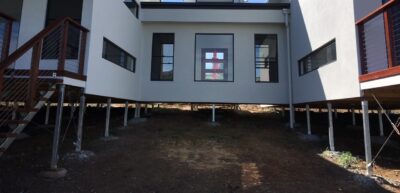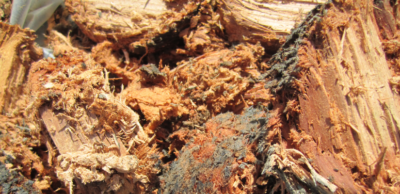
Signs of Deteriorating House Stumps: How to Identify Potential Issues Early On
The stability and safety of your home depend significantly on the condition of its foundation. Today we look at how to identify potential issues with house stumps.
House stumps, also known as piers or posts, are critical in maintaining this stability, particularly in homes elevated above the ground. Over time, these stumps can deteriorate due to various factors, potentially compromising the structural integrity of your property.
Is My House Safe? Identifying Problems With Your House Stumps
Recognising the early signs of deteriorating house stumps can help prevent severe damage and costly repairs.
Uneven Floors and Sagging
One of the most noticeable signs of deteriorating house stumps is uneven or sagging floors. If you walk through your home and notice that certain areas feel lower or more sloped than others, this could indicate that the stumps are failing.
Actionable Steps:
- Visual Inspection: Conduct a visual inspection of your floors. Look for any noticeable slopes or dips.
- Level Test: Use a spirit level to check the flatness of the floors in various rooms. Mark areas where the level indicates significant unevenness.
- Marble Test: Place a marble on the floor and observe its movement. If it rolls towards a specific direction consistently, it may indicate a slope caused by stump deterioration.
Cracks in Walls
Cracks in the walls, both inside and outside, can be a sign of foundation issues, including deteriorating stumps. These cracks can vary in size and direction, but they often appear near windows, doors, and corners of the house.
Actionable Steps:
- Identify Crack Patterns: Inspect your walls for cracks, paying particular attention to areas around windows, doors, and corners. Note the size and direction of the cracks.
- Monitor Changes: Use a pencil to mark the ends of the cracks and monitor their growth over time. If the cracks are expanding, this could indicate ongoing foundation movement.
- Seek Professional Advice: If you notice significant or growing cracks, consult a professional to assess the severity of the issue and determine if stump deterioration is the cause.
Bouncy or Spongy Floors
Floors that feel bouncy or spongy underfoot can indicate that the stumps are no longer providing adequate support. This sensation often results from stumps that have decayed, shifted, or been damaged by pests.
Actionable Steps:
- Physical Inspection: Walk through each room of your home, paying attention to how the floors feel underfoot. Note any areas that feel particularly bouncy or spongy.
- Floorboard Check: Lift a few floorboards in the affected areas to inspect the condition of the stumps and joists underneath. Look for signs of decay, damage, or pest infestation.
- Professional Assessment: If you suspect that your floors are bouncy due to deteriorating stumps, it’s advisable to have a professional assess the situation and recommend appropriate repairs.
Windows and Doors That Stick
Difficulty in opening and closing windows and doors can be a symptom of shifting or settling stumps. This misalignment can result from changes in the foundation’s level, causing the frames to warp or bind.
Actionable Steps:
- Inspect Frames: Examine the frames of windows and doors for signs of warping or misalignment. Look for gaps, sticking points, or areas where the frame does not sit flush.
- Operational Test: Open and close each window and door in your home, noting any that stick, are difficult to move, or do not latch properly.
- Check for Cracks: Look for cracks in the walls around the affected windows and doors, which may indicate foundation movement.
Visibly Decaying Stumps
Visible signs of decay in your house stumps are a clear indication that they need attention. Decay can be caused by moisture, pests, or general wear and tear over time.
Actionable Steps:
- Crawl Space Inspection: If your home has a crawl space, regularly inspect the stumps for signs of decay, such as rotting wood, termite damage, or fungal growth.
- Poke Test: Use a screwdriver or similar tool to gently poke the stumps. If the wood feels soft or crumbly, it may be decaying.
- Moisture Check: Look for signs of excessive moisture around the stumps, as this can accelerate decay. Check for leaks, standing water, or poor drainage.
Issues in the Foundation
Moisture below the house, changes in soil composition, and other environmental factors can all impact the condition of your house stumps. Identifying these issues early can prevent significant damage.
Actionable Steps:
- Crawl Space Moisture: Regularly check your crawl space for signs of moisture, such as dampness, mould, or mildew. Ensure that there is adequate ventilation and that any leaks are promptly repaired.
- Soil Inspection: Examine the soil around your home for signs of erosion, settlement, or poor drainage. Ensure that downspouts and gutters direct water away from the foundation.
- Root Intrusion: Check for tree roots near your house that could be affecting the foundation. Roots can exert pressure on the stumps and cause them to shift or deteriorate.
Find an Expert: LevelMaster
Identifying the signs of deteriorating house stumps early on can save you from extensive damage and costly repairs. If you notice any of the indicators mentioned above, it’s crucial to consult a professional to assess the situation and recommend appropriate solutions.
At LevelMaster, we specialise in providing high-quality adjustable steel house stumps. Unlike wood or concrete, our stumps offer superior durability and flexibility, lasting longer and protecting your home. Our team of experts can help you determine the best course of action to ensure your home remains safe and stable.
House stumps play a vital role in maintaining the structural integrity of your home. By regularly inspecting for signs of deterioration and addressing issues promptly, you can prevent significant damage and maintain the safety and stability of your property.
We can also help with house stump installation across Australia including but not limited to Brisbane, Sydney, Adelaide and Melbourne
LevelMaster also supply Stair Stringers with a stair calculator to help you determine the number of stair treads
If you suspect that your house stumps are deteriorating, contact LevelMaster today to discuss your options and find the best solution for your needs. See our adjustable steel house stump shop for a durable, long-lasting foundation that you can rely on for years to come.



